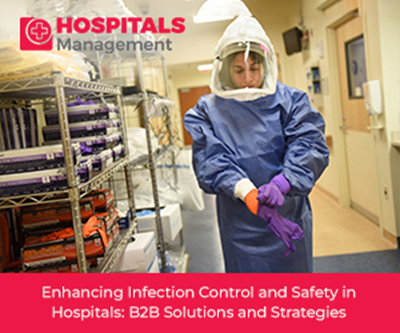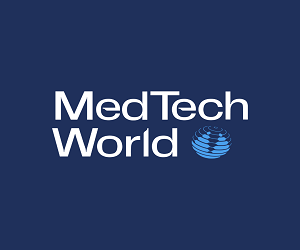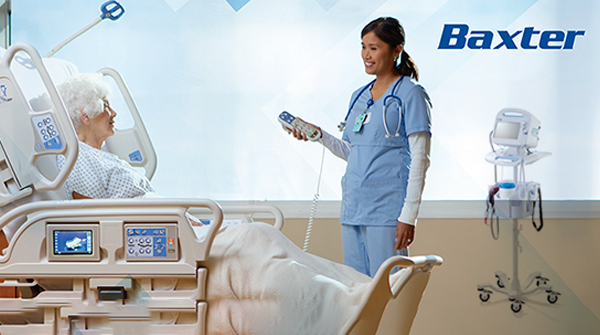Enhancing Infection Control and Safety in Hospitals: B2B Solutions and Strategies

Introduction:
In the realm of hospital administration, infection control and safety stand out as top priorities. These two fundamental principles underpin patient care, ensuring healthcare facilities not only deliver effective treatments but also create an environment that reduces the likelihood of healthcare-associated infections (HAIs) and other safety issues.
Recent global events, particularly the emergence of pandemics, have dramatically underscored the vital role of infection control and safety measures in healthcare settings. The COVID-19 pandemic, in particular, exposed vulnerabilities in our healthcare systems, emphasizing the need for proactive strategies to combat infectious diseases.
The profound impact of pandemics, like COVID-19, has illuminated the critical importance of robust infection control and safety measures within hospitals. The consequences of lapses in these areas can be dire, affecting not only patient health but also healthcare staff, the broader community, and the overall functionality of healthcare institutions.
In this dynamic healthcare landscape, where challenges constantly evolve, the role of B2B (business-to-business) solutions and strategies becomes increasingly pivotal. B2B partners offer specialized expertise, innovative technologies, and tailored approaches that enable hospitals to navigate the complexities of infection control and safety effectively.
Section 1: The Changing Terrain of Infection Control
The domain of infection control in hospitals is inherently fluid and in constant evolution. This landscape undergoes ongoing transformations driven by various elements, such as the emergence of novel pathogens and the escalating complexities posed by antibiotic resistance. In this section, we will delve into the ever-evolving realm of infection control and examine the necessary adaptations hospitals must make to safeguard patient well-being.
1.1 Emerging Pathogens: The Unpredictable Threat
The world has witnessed the rapid emergence of previously unknown pathogens over the past few decades. From the sudden appearance of HIV/AIDS in the 1980s to the more recent outbreaks of SARS, MERS, and COVID-19, hospitals have had to confront new and often highly contagious diseases. These emerging pathogens pose unique challenges to infection control strategies.
For example, the COVID-19 pandemic, caused by the novel coronavirus SARS-CoV-2, demonstrated how quickly and extensively a new pathogen can spread. Hospitals worldwide were faced with overwhelming patient numbers, shortages of personal protective equipment (PPE), and the need to rapidly adapt care protocols. This underscored the importance of surge capacity, telemedicine, and rapid vaccine distribution in responding to emerging infections.
1.2 Antibiotic Resistance: An Escalating Challenge
Antibiotic resistance looms as a significant apprehension in the ever-changing sphere of infection control. The excessive and inappropriate use of antibiotics has fostered the emergence of bacteria resistant to multiple drugs, rendering infections progressively harder to combat. Hospitals frequently find themselves at the forefront of this battle against drug-resistant pathogens, necessitating a multifaceted strategy for prevention.
The implications of antibiotic resistance for patient care are profound. Patients with infections caused by resistant bacteria face reduced treatment options, longer hospital stays, increased mortality risks, and complications during surgical procedures. Hospitals play a pivotal role in both contributing to and combatting antibiotic resistance.
Contributing Factors: Hospitals can inadvertently contribute to antibiotic resistance through factors such as overuse or misuse of antibiotics, incomplete treatment courses, and inadequate infection control practices. This can lead to the emergence and spread of antibiotic-resistant strains within healthcare settings.
Addressing Antibiotic Resistance: Hospitals have taken proactive steps by introducing antibiotic stewardship programs aimed at promoting judicious antibiotic utilization. These initiatives strive to enhance prescription practices, curtail unnecessary usage, and thwart the emergence of resistance. Concurrently, hospitals prioritize stringent infection control protocols to mitigate the potential transmission of resistant pathogens among patients.
1.3 Adaptation and Innovation in Hospitals
To maintain patient safety, hospitals must adapt swiftly to the changing landscape of infection control. This means more than just updating protocols; it involves a proactive stance towards prevention, surveillance, and treatment. Hospitals need to foster a culture of continuous improvement and innovation to stay ahead of evolving threats.
1.3.1 Enhanced Screening Procedures
Hospitals have acknowledged the paramount significance of early detection in halting the dissemination of infectious diseases. The enhancements in screening protocols encompass:
Cutting-edge Diagnostic Technologies: Hospitals are dedicating resources to cutting-edge diagnostic instruments like PCR (polymerase chain reaction) testing, serological assays, and rapid antigen tests for swift and precise pathogen identification.
Screening Questionnaires: Implementing screening questionnaires to identify potential symptoms and exposure history, helping healthcare providers make informed decisions about patient care and isolation.
Contact Tracing: Using technology and data analytics to trace and notify individuals who may have been exposed to infected patients, allowing for timely isolation and testing.
These advancements in screening enhance hospitals' ability to detect and isolate infected individuals rapidly, preventing further transmission within healthcare settings.
1.3.2 Enhanced Isolation Protocols
Isolation protocols play a crucial role in preventing the spread of infections within hospitals:
Negative Pressure Rooms: Hospitals now feature negative pressure isolation rooms, specially designed to confine airborne pathogens like tuberculosis or COVID-19. These rooms effectively diminish the likelihood of pathogen transmission to healthcare workers and fellow patients.
Personal Protective Equipment (PPE): Hospitals prioritize the accessibility and correct utilization of PPE, encompassing masks, gowns, gloves, and face shields. These measures safeguard healthcare personnel from potential exposure to infectious agents.
Isolation and Cohorting: Hospitals are refining protocols for isolating infected patients and cohorting individuals with similar infections to minimize cross-contamination.
Enhanced isolation protocols are pivotal in safeguarding the health of patients and healthcare providers, particularly in the context of emerging infections.
1.3.3 Advancements in Vaccine Research and Distribution
Vaccines play a pivotal role in the prevention of infectious diseases:
Research and Innovation: Hospitals actively participate in collaborative research ventures with pharmaceutical firms and research institutions to foster the development of vaccines targeting newly emerging pathogens. This commitment encompasses involvement in clinical trials and studies concerning vaccine distribution.
Vaccine Distribution Centers: Hospitals often serve as distribution hubs for vaccines, ensuring equitable access to vaccines within communities and providing vaccination clinics for healthcare workers and the public.
Education and Promotion: Hospitals play a role in educating the public about the importance of vaccination and addressing vaccine hesitancy.
The development and distribution of vaccines are pivotal in preventing the spread of infectious diseases and reducing the burden on healthcare systems during outbreaks.
1.3.4 Importance of Research and Development (R&D) within Hospitals
Research and development are pivotal in addressing emerging challenges in infection control. Hospitals contribute to R&D in several ways:
Clinical Trials: Hospitals conduct clinical trials to test the efficacy and safety of new treatments, therapies, and vaccines. These trials provide essential data for regulatory approvals and guide evidence-based patient care.
Surveillance and Data Analysis: Hospitals gather and analyze epidemiological data to monitor the spread of infections, identify emerging pathogens, and track resistance patterns. This information informs public health responses and guides hospital-level strategies.
Innovation and Technology Integration: Hospitals collaborate with research institutions and B2B partners to develop and adopt innovative technologies and tools, such as AI-driven diagnostic platforms and advanced sterilization methods.
Training and Education: Hospitals invest in training healthcare professionals in the latest infection control practices, fostering a culture of continuous improvement and knowledge dissemination.
Section 2: B2B Solutions for Infection Control and Safety
2.1 Leveraging B2B Expertise
In the ever-evolving landscape of infection control and safety, hospitals are increasingly turning to B2B partners for specialized expertise and solutions. B2B partners offer a range of innovative technologies, products, and services that empower hospitals to enhance their infection control measures effectively.
2.2 Advanced Sanitization Technologies
B2B partners in the field of infection control provide hospitals with access to cutting-edge sanitization technologies. These technologies go beyond traditional cleaning methods and offer more comprehensive disinfection solutions. For example:
UV-C Disinfection: Hospital partnerships with B2B entities provide access to UV-C disinfection apparatuses employing ultraviolet light to exterminate or deactivate pathogens on surfaces and in the surrounding air. These devices demonstrate remarkable efficacy in mitigating the potential for surface contamination and airborne transmission.
Electrostatic Sprayers: B2B partners offer electrostatic sprayers that apply disinfectants as a fine mist, ensuring even coverage on surfaces. This technology improves the efficiency and effectiveness of disinfection processes.
Antimicrobial Surfaces: Some B2B partners provide materials and coatings with inherent antimicrobial properties, reducing the growth and survival of pathogens on frequently touched surfaces.
2.3 Enhanced Air Filtration Systems
Maintaining superior indoor air quality stands as a pivotal element in infection control. Through collaborations with B2B partners, hospitals gain access to cutting-edge air purification systems engineered to eliminate airborne pathogens, particulate matter, and volatile organic compounds. These systems play a pivotal role in establishing safer and healthier indoor environments for both patients and healthcare personnel.
2.4 Personal Protective Equipment (PPE) Suppliers
Reliable access to high-quality PPE is paramount for hospitals, especially during infectious disease outbreaks. B2B partners specializing in PPE procurement ensure a steady supply of essential protective gear, including masks, gloves, gowns, and face shields. This partnership helps hospitals maintain a sufficient stockpile of PPE to protect their frontline workers.
2.5 Data-Driven Solutions
Infection control in the modern healthcare landscape is increasingly data-driven. B2B partners specializing in healthcare analytics provide hospitals with sophisticated data collection and analysis tools. These tools help hospitals monitor infection rates, identify trends, and make data-informed decisions to improve safety measures.
2.6 Staff Training and Education Services
Effective infection control relies on well-trained healthcare staff. B2B partners offer training and education services tailored to the unique needs of hospitals. These programs ensure that healthcare professionals understand and adhere to the latest infection control protocols, reducing the risk of lapses in safety measures.
2.7 Regulatory Compliance Support
Staying compliant with evolving healthcare regulations and standards is a constant challenge for hospitals. B2B partners with expertise in regulatory compliance assist hospitals in navigating the complex landscape of healthcare regulations. This support ensures that hospitals meet all requirements related to infection control and safety.
2.8 Future-Ready Technologies
The healthcare industry is on the cusp of transformative technological advancements. B2B partners are at the forefront of developing and implementing future-ready technologies that have the potential to revolutionize infection control. Examples include:
Utilizing Artificial Intelligence (AI) in Surveillance: AI-powered surveillance systems have the capacity to analyze extensive volumes of patient data and clinical information. They excel at identifying potential outbreaks in their early stages, enabling hospitals to enact rapid responses.
Robotics for Sterilization: Hospital-acquired infections often originate from contaminated surfaces. Robotics equipped with ultraviolet or chemical disinfection capabilities can autonomously sterilize rooms, reducing the risk of surface transmission.
Incorporating Telemedicine: Collaborating with B2B partners enables hospitals to seamlessly integrate telemedicine solutions into their healthcare delivery frameworks. This integration facilitates remote consultations, diminishing the necessity for in-person interactions, particularly during outbreaks.
Section 3: Data-Driven Infection Control
3.1 Harnessing the Power of Data
Data-driven infection control is a game-changer for hospitals. B2B partners specializing in healthcare data analytics provide hospitals with the tools and expertise to collect, analyze, and leverage data effectively in their infection control efforts.
3.2 Real-Time Surveillance
One of the key advantages of data-driven infection control is real-time surveillance. Hospitals can monitor patient admissions, laboratory results, and clinical notes in real-time to identify potential outbreaks or spikes in infection rates. B2B partners offer software solutions that enable hospitals to automate this surveillance, providing timely alerts when unusual patterns are detected.
3.3 Predictive Analytics
Predictive analytics is a powerful tool for infection control. By analyzing historical data and trends, hospitals can predict when and where outbreaks are likely to occur. B2B partners provide predictive modeling tools that help hospitals allocate resources proactively and implement preventive measures to reduce the impact of emerging infections.
3.4 Streamlining Contact Tracing and Epidemiological Investigations
Efficient contact tracing plays a pivotal role in curtailing the transmission of infectious diseases. B2B partners provide contact tracing software that simplifies the task of identifying and alerting individuals who may have encountered infected patients. This technology proves particularly invaluable during outbreaks of exceptionally contagious diseases.
3.5 Data Integration
Data-driven infection control relies on the integration of various data sources within a hospital's IT infrastructure. B2B partners specialize in data integration solutions that allow hospitals to consolidate data from electronic health records (EHRs), laboratory systems, and other sources into a unified platform. This integration streamlines data analysis and reporting, making infection control efforts more efficient and effective.
3.6 Performance Metrics and Reporting
To continuously improve infection control measures, hospitals need access to performance metrics and reporting tools. B2B partners offer customizable dashboards and reporting systems that allow hospitals to track key performance indicators related to infection rates, hand hygiene compliance, and other critical aspects of patient safety.
3.7 Resource Allocation Optimization
Data-driven infection control also extends to resource allocation. B2B partners provide hospitals with tools that optimize the allocation of staff, PPE, and other resources based on real-time data and demand forecasts. This ensures that hospitals can respond effectively to emerging infections without overextending their resources.
Section 4: Employee Training and Education
4.1 The Role of Healthcare Staff
The effectiveness of infection control measures within hospitals relies heavily on the knowledge and actions of healthcare staff. Hospitals must ensure that their employees are well-trained and educated on the latest infection control protocols and best practices.
4.2 Continuous Training Programs
Hospitals are increasingly partnering with B2B providers of healthcare training and education services to establish continuous training programs for their staff. These programs offer several benefits:
Up-to-date Knowledge: B2B training providers stay current with the latest guidelines and recommendations in infection control. They offer training modules that reflect the most recent developments in the field.
Customized Training Plans: B2B partners work with hospitals to create customized training plans that address the specific needs of their staff. This ensures that training is relevant and effective.
Online and On-Site Options: B2B providers offer flexible training options, including online courses and on-site workshops. This flexibility accommodates the diverse schedules and learning preferences of healthcare professionals.
Certification and Compliance: B2B training programs often include certification components to verify staff competency. This is essential for hospitals to maintain compliance with regulatory requirements.
Measurement and Assessment: B2B partners utilize assessment tools to measure the effectiveness of training programs. Hospitals can track staff progress and identify areas that may require additional training or reinforcement.
4.3 Simulation and Scenario-Based Training
Simulation and scenario-based training are valuable tools for preparing healthcare staff to respond effectively to emerging infections and other safety concerns. B2B partners specializing in healthcare simulation offer realistic training experiences that mimic real-life situations.
Outbreak Response Simulations: Hospitals can engage in outbreak response simulations, where healthcare staff practice their roles during an infectious disease outbreak. This type of training helps staff become familiar with the specific protocols and procedures required in these high-stress situations.
Pandemic Preparedness Drills: B2B partners can facilitate pandemic preparedness drills that simulate the challenges hospitals may face during a widespread infectious disease outbreak. These drills test hospital readiness and identify areas for improvement.
Safe PPE Use and Removal: Proper use and removal of PPE are critical to infection control. B2B partners offer training modules and simulations that teach healthcare staff the correct techniques for donning and doffing PPE safely.
4.4 Accessible Learning Resources
In addition to formal training programs, B2B partners provide hospitals with a wealth of accessible learning resources. These resources may include:
Online Libraries: B2B providers maintain extensive online libraries of educational materials related to infection control and safety. Hospitals can access articles, videos, and reference materials to supplement their staff's knowledge.
Webinars and Workshops: B2B partners often host webinars and workshops on relevant topics in infection control. These events offer opportunities for healthcare staff to engage with experts and stay informed about the latest developments.
Just-in-Time Training: In response to emerging infections, B2B partners can deliver just-in-time training modules that quickly disseminate critical information to healthcare staff. This ensures that staff are well-prepared to respond to new challenges as they arise.
4.5 Ongoing Support
B2B partners do not merely provide training and education and then disappear. They offer ongoing support to hospitals to ensure that infection control knowledge is continually reinforced and updated. This support may include:
Access to Subject Matter Experts: Hospitals can reach out to B2B partners' subject matter experts for guidance and clarification on infection control issues.
Regular Updates: B2B partners keep hospitals informed about changes in guidelines, regulations, and best practices in infection control.
Performance Monitoring: B2B partners assist hospitals in monitoring staff performance in infection control, offering feedback and recommendations for improvement.
Adaptive Training: When new challenges emerge, B2B partners can quickly adapt training materials and programs to address the specific needs of hospitals.
Section 5: Regulatory Compliance and Certification
5.1 Navigating Complex Regulations
Hospitals operate in a complex regulatory environment with stringent requirements related to infection control and patient safety. Compliance with these regulations is not optional; it is essential to ensure the well-being of patients and the legal standing of healthcare institutions.
5.2 The Contribution of B2B Partners
B2B partners with expertise in regulatory compliance play a crucial role in assisting hospitals as they navigate this intricate terrain. These partners provide an array of services and resources aimed at guaranteeing that hospitals adhere to all pertinent regulations and standards.
5.3 Infection Control Audits and Assessments
B2B partners can conduct comprehensive audits and assessments of hospitals' infection control practices. These evaluations involve:
Reviewing Protocols: B2B partners review hospitals' infection control policies and procedures to ensure they align with regulatory requirements and best practices.
On-Site Inspections: In some cases, B2B partners may perform on-site inspections to assess the implementation of infection control measures.
Documentation Review: B2B partners scrutinize hospitals' documentation related to infection control, including training records, incident reports, and compliance documentation.
Identification of Deficiencies: If deficiencies or areas of non-compliance are identified, B2B partners work with hospitals to develop corrective action plans and ensure timely resolution.
5.4 Regulatory Updates and Guidance
Regulations and guidelines related to infection control are not static; they evolve in response to emerging threats and changing healthcare landscapes. B2B partners stay attuned to these changes and provide hospitals with timely updates and guidance.
Interpretation of Regulations: B2B partners help hospitals interpret complex regulatory language and understand how it applies to their specific circumstances.
Adherence to Evolving Guidelines: As guidelines related to infection control evolve, B2B partners assist hospitals in adapting their practices and policies to remain compliant.
Preparation for Inspections: Hospitals must be prepared for inspections by regulatory agencies. B2B partners offer mock inspection services to help hospitals identify and rectify potential compliance issues before they face official scrutiny.
5.5 Education and Training
Education is a crucial component of regulatory compliance. B2B partners provide hospitals with education and training resources that ensure healthcare staff are well-versed in infection control regulations and standards.
Customized Training: B2B partners develop training modules tailored to hospitals' specific compliance needs. These modules cover topics such as hand hygiene, sterilization, and safe injection practices.
Certification Programs: Some B2B partners offer certification programs in infection control compliance. These programs verify staff competency and provide hospitals with documented evidence of compliance efforts.
5.6 Risk Mitigation
Compliance with infection control regulations is not only a matter of legal obligation but also a means of risk mitigation. B2B partners help hospitals identify and mitigate risks associated with infection control lapses.
Risk Assessment: B2B partners conduct risk assessments to identify vulnerabilities in hospitals' infection control practices and recommend strategies to mitigate these risks.
Incident Response Planning: In the event of an infection control incident or outbreak, B2B partners assist hospitals in developing response plans and communication strategies to manage the situation effectively.
Section 6: Conclusion
Infection control and safety remain paramount concerns in hospital management. The evolving landscape of infectious diseases, antibiotic resistance, and emerging pathogens demands proactive strategies and innovative solutions to ensure patient well-being and healthcare system resilience.
B2B solutions and strategies are instrumental in addressing these challenges. B2B partners provide hospitals with a wide array of tools, technologies, expertise, and support to enhance infection control and safety measures. From advanced sanitization technologies to data-driven solutions and regulatory compliance support, B2B partners empower hospitals to adapt, innovate, and thrive in the face of evolving threats.
Within the perpetually evolving healthcare environment, the alliance between hospitals and B2B partners transcends a mere commercial exchange; it embodies a symbiotic rapport that actively enhances the safety and welfare of both patients and healthcare providers. Harnessing the competencies of B2B partners, hospitals persist as bastions of safety, ingenuity, and exemplary healthcare provision. In concert, they fortify healthcare facilities, fostering adaptability, responsiveness, and preparedness to confront the future's myriad challenges.






